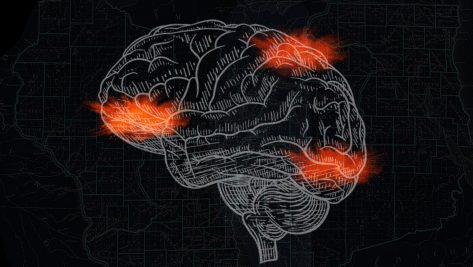In the 1970s and 1980s, two issues—oil and poverty—dominated practically every macroeconomic analysis. Nowadays, multiple variables come into play, including the technological revolution, globalization-related phenomena, and demographic changes. On the demographic front, many countries are starting to feel the symptoms of an aging and shrinking workforce. At the same time, migration faces rising levels of social and political rejection, particularly in Europe and the United States, despite being necessary to compensate for population decline and falling birthrates. Meanwhile, Africa and, to a lesser extent, Asia and Latin America will see a demographic explosion over the next 50 years, driving even more migration towards the aging and increasingly xenophobic North. Host countries will find themselves swallowing ever larger doses of realism to address this intractable problem.
The aging of the population presents another complex issue: the sustainability of pay-as-you-go pension systems, which are verging on collapse in many countries. Governments must urgently start working to solve this rapidly approaching crisis.
The fruits of several decades’ worth of economic growth and welfare-state policies have been wiped out by the financial crisis, imminent technological changes, and competition from the South.
Unstoppable globalization
Migratory phenomena have been exacerbated by globalization—a process that is here to stay and which, in economic terms, has created winners and losers. The winners include inhabitants of the regions that have managed to insert themselves into the flows of global commerce. In these regions, misery has abated and famine—a regular occurrence not so long ago—has all but disappeared. However, as offshoring has gained momentum and competition among workers has surged, large segments of the working and middle classes of the most highly industrialized nations have disappeared.
Although globalization has narrowed the North-South gap, it has also fueled the rise of inequality in the North. The fruits of several decades’ worth of economic growth and welfare-state policies have been wiped out by the financial crisis, imminent technological changes, and competition from the South.
Capital gains have grown exponentially over the past three decades—even during the crisis—and these riches have accumulated in small segments of the population. Meanwhile, wages have stagnated or fallen, destroying the wealth of large swathes of the middle class, especially in Europe and the United States. These trends explain the various populist movements that have arisen over the past decade in response to social discontent.
Globalization has also created a world that is increasingly homogeneous, both economically and culturally. The main shopping streets of Madrid, Rome, and London have been colonized by the same multinational brands, making them virtually indistinguishable from one another. The same thing is happening with culture and customs, which are becoming more uniform, more assimilated, and less locally specific.
But globalization has done more than rewrite the social, cultural, and economic rules. Digitalization—and the imminent technological revolution it entails—will reconfigure labor markets and production models as we know them today.
As concerns about climate change lead to the replacement of fossil fuels with clean energy sources, certain countries and regions that have shaped the geopolitics of energy for the past five decades will be pushed into the background.
Machines and algorithms
We are looking at a future in which algorithms and machines will replace millions of jobs all over the world, especially those involving the most routine tasks. At the same time, we will see rising demand for skill sets unlike anything required today. The big question of the coming decades is whether or not there will be work for everyone. If there is not enough work, we will need to figure out what to do with—and how to support—those who are left behind by this revolution because they lack the newly demanded skills.
On top of all that, there is no guarantee that today’s successful production models will survive. Digitalization is enabling new players to knock down barriers to entry that have traditionally protected many sectors and industries. On this new playing field, communication technologies are playing a key role by producing a previously unheard-of phenomenon: consumer empowerment. Armed with complete information and eager to share it with others, consumers are no longer passive subjects in their dealings with companies. Indeed, consumers have positioned themselves firmly at the center of the commercial relationship. This empowerment also has a political dimension: today’s politicians use Twitter to communicate, but citizens can also exercise influence, join forces, make decisions, and topple governments with their tweets and texts.
Another aspect of today’s global scenario is the rise of emerging countries and the shifting of economic power to the Pacific Rim. Asian countries have benefited from this shift, and China in particular has risen from local actor to global power in just a few decades. Indeed, China is not satisfied with mere economic power; it also wants to be a leader in geopolitics, technology, space exploration, and—naturally—military might.
To achieve these goals, China needs to guarantee its access to natural resources and its control over supply chains. It secures these advantages by funding—and driving into debt—numerous African and Southeast Asian countries, drawing accusations of colonialism 2.0. But China’s rise and expansion have also generated tensions with regional powers like Japan and the lone global superpower: the United States. The so-called trade war is clearly a first step towards—or a pretext for—blocking China from supplying Western technology.
Digitalization—and the imminent technological revolution it entails—will reconfigure labor markets and production models as we know them today.
At any rate, China is reshaping the landscape of power in the 21st century. As concerns about climate change lead to the replacement of fossil fuels with clean energy sources, certain countries and regions that have shaped the geopolitics of energy for the past five decades will be pushed into the background. With this replacement process already underway, the fracking revolution has irrevocably altered the status quo of the hydrocarbon market, making the United States once again the world’s top oil and gas producer.
The imminent changes driven by technological development, demographic shifts, climate change, and globalization are getting little attention from the world’s governments. The Western economies’ prevailing short-term vision—which disregards factors poised to shape the economy over the coming decades—cannot help us address the great social and economic challenges of the future. The welfare-state model provides an instructive example: we know that the current situation is unsustainable, but government officials refuse to undertake reforms, for fear of the political cost.
The economy, firmly rooted in short-term political considerations, has been unable to offer real solutions to the challenges that lie ahead.
© IE Insights.











